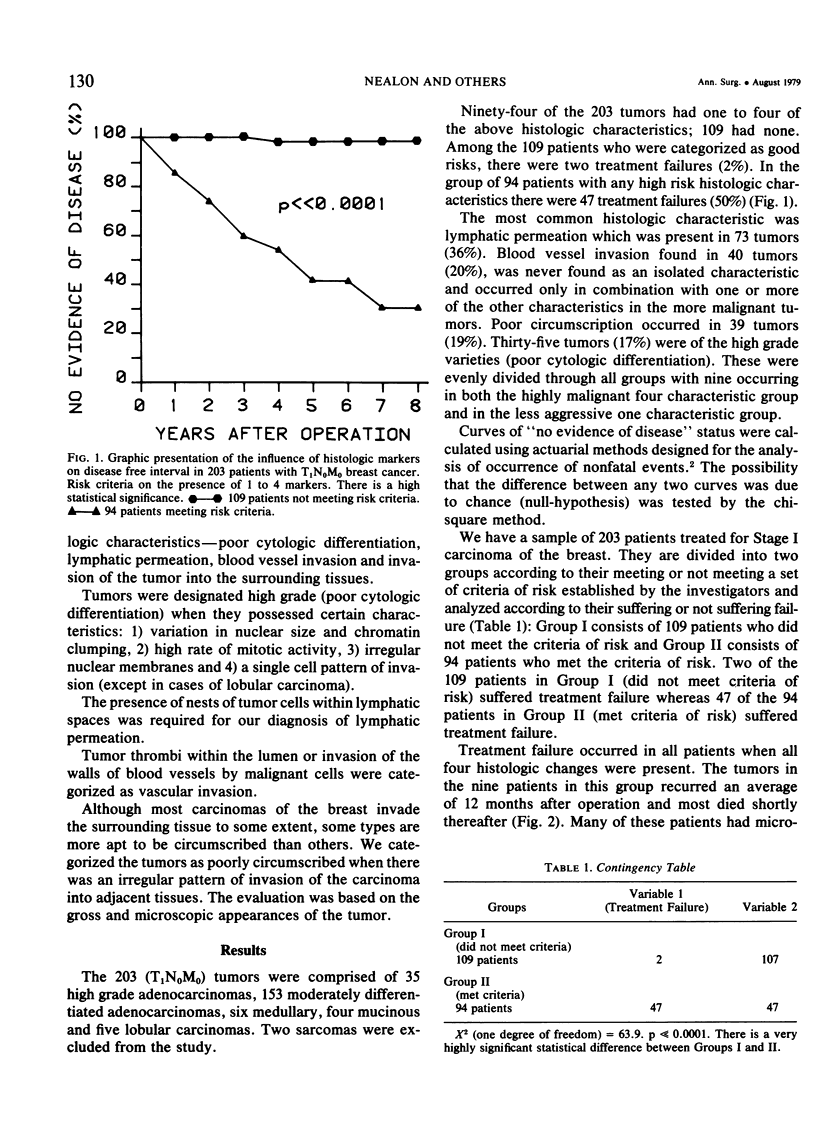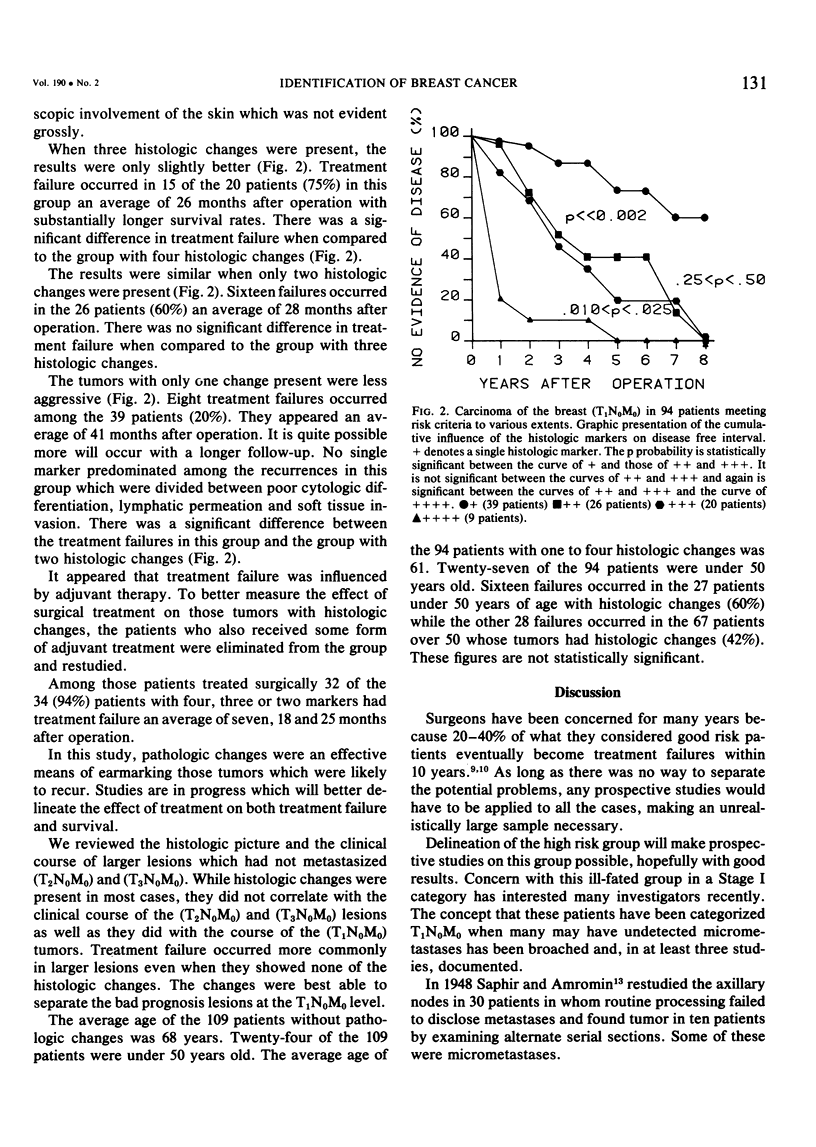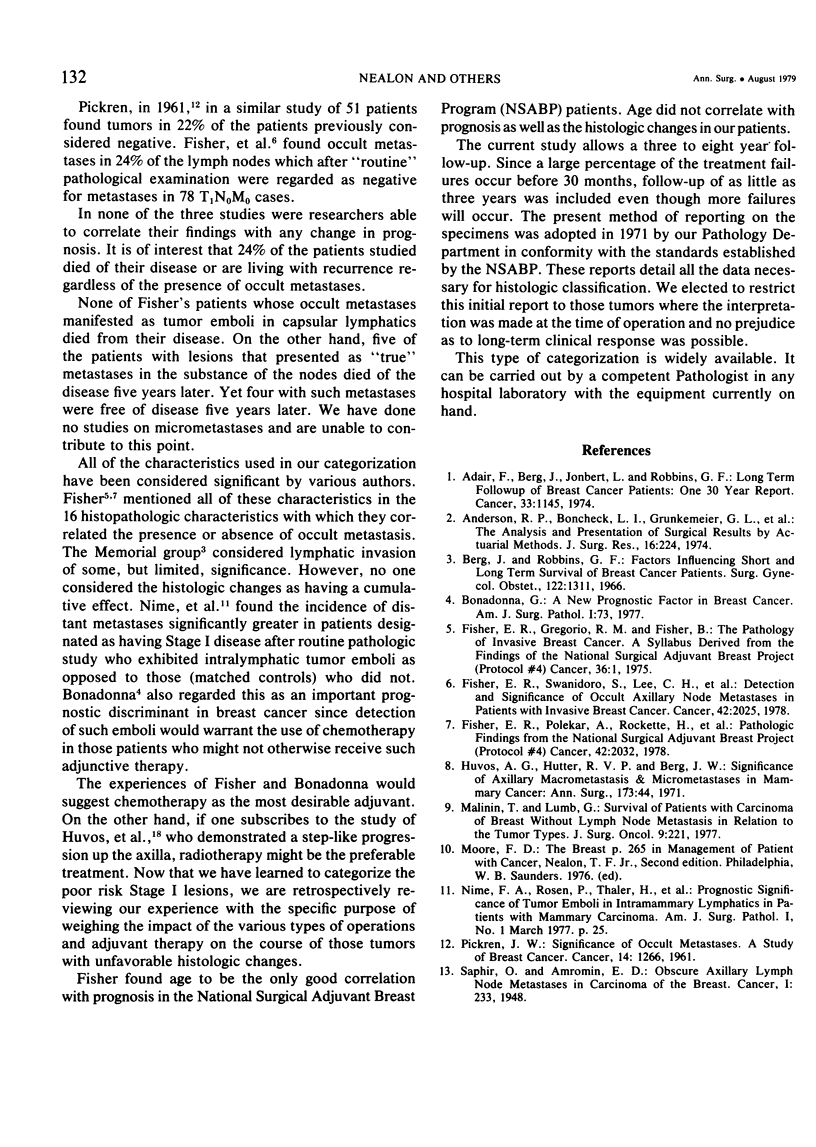Abstract
Twenty to 40% of Stage I(T1N0M0) cancers of the breast recur in ten years. This is an attempt to identify those patients in whom the disease is likely to recur. On the basis of a study of the histologic changes in the tumor and treatment failures poor prognosis was associated with several histological characteristics: poor cytologic differentiation; lymphatic permeation; blood vessel invasion and invasion of the tumor into the surrounding soft tissue. This classification was then applied to 363 cancers of the breast seen over a five year period and followed three to eight years. There were 203 Stage I (T1N0M0) tumors in the group. Ninety-four of the 203 Stage I tumors had one to four of the above histologic characteristics; 109 had none. Among the 109 patients characterized as good risks there were two treatment failures (2%). In the group of 94 with any high risk histologic features there were 47 treatment failures (50%) which were statistically significant (p = 0.001). The histologic changes had a cumulative effect on the degree of malignancy of the tumor. Pathologic changes in the tumor identified those patients whose Stage I (T1N0M0) tumors were likely to recur.
Full text
PDF



Selected References
These references are in PubMed. This may not be the complete list of references from this article.
- Adair F., Berg J., Joubert L., Robbins G. F. Long-term followup of breast cancer patients: the 30-year report. Cancer. 1974 Apr;33(4):1145–1150. doi: 10.1002/1097-0142(197404)33:4<1145::aid-cncr2820330438>3.0.co;2-0. [DOI] [PubMed] [Google Scholar]
- Anderson R. P., Bonchek L. I., Grunkemeier G. L., Lambert L. E., Starr A. The analysis and presentation of surgical results by actuarial methods. J Surg Res. 1974 Mar;16(3):224–230. doi: 10.1016/0022-4804(74)90035-3. [DOI] [PubMed] [Google Scholar]
- Berg J. W., Robbins G. F. Factors influencing short and long term survival of breast cancer patients. Surg Gynecol Obstet. 1966 Jun;122(6):1311–1316. [PubMed] [Google Scholar]
- Fisher E. R., Palekar A., Rockette H., Redmond C., Fisher B. Pathologic findings from the National Surgical Adjuvant Breast Project (Protocol No. 4). V. Significance of axillary nodal micro- and macrometastases. Cancer. 1978 Oct;42(4):2032–2038. doi: 10.1002/1097-0142(197810)42:4<2032::aid-cncr2820420453>3.0.co;2-o. [DOI] [PubMed] [Google Scholar]
- Fisher E. R., Swamidoss S., Lee C. H., Rockette H., Redmond C., Fisher B. Detection and significance of occult axillary node metastases in patients with invasive breast cancer. Cancer. 1978 Oct;42(4):2025–2031. doi: 10.1002/1097-0142(197810)42:4<2025::aid-cncr2820420452>3.0.co;2-j. [DOI] [PubMed] [Google Scholar]
- Huvos A. G., Hutter R. V., Berg J. W. Significance of axillary macrometastases and micrometastases in mammary cancer. Ann Surg. 1971 Jan;173(1):44–46. doi: 10.1097/00000658-197101000-00006. [DOI] [PMC free article] [PubMed] [Google Scholar]
- Malinin T. I., Lumb G. D. Survival of patients with carcinoma of breast without lymph node metastases in relation to the tumor types. J Surg Oncol. 1977;9(3):221–228. doi: 10.1002/jso.2930090303. [DOI] [PubMed] [Google Scholar]
- PICKREN J. W. Significance of occult metastases. A study of breast cancer. Cancer. 1961 Nov-Dec;14:1266–1271. doi: 10.1002/1097-0142(196111/12)14:6<1266::aid-cncr2820140617>3.0.co;2-9. [DOI] [PubMed] [Google Scholar]


